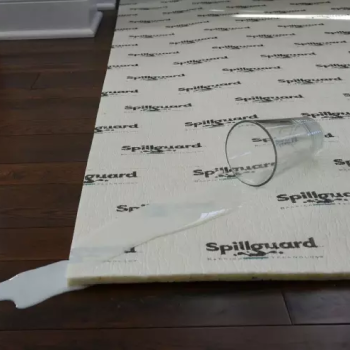If you are confused about flooring underpad, you are not alone. Plus, similar sounding terms such as underlayment and underpadding can further muddy the waters. Consider this your guide to the world of underpad for flooring!
Let’s start with the difference between underlayment and underpadding. Underlayment is the layer that goes beneath hard flooring while underpadding is used under carpet. They are cushioning that bridges the gap between the foundation of your home or unit and your new carpet or flooring.
Why do I Need an Underpad for Laminate (and Other) Flooring?
While what’s under your floor is invisible to the eye, certain types of flooring require underpadding or underlayment for it to deliver on its promises. The right type of padding can make your floor sound better, feel better and possibly even extend warranty life. Both too much or too little cushioning under flooring can lead to problems such as squeaking, cracking, surface irregularity or seams splitting open.
While some types of flooring such as solid hardwood do not require underlayment, laminate flooring does because it is thin and made from fiberboard rather than solid wood or plywood. Since subfloors often have imperfections such as nail holes, pits, grooves and splinters, underlayment is needed beneath laminate flooring to even this out and allow laminate planks to lay smoother, connect better and feel a bit softer. It also absorbs sound. Underlayment can be attached to the underside of the flooring or be laid separately.

Another situation that calls for underlayment is if flooring will be installed directly on a hard surface such as concrete or other masonry.
At Straightline Custom Flooring, we have decades of experience with all types of underpad installation and we offer a selection of underpad and underlayment to choose from, making us your one-stop store where you can shop with complete confidence. Contact us today to discover the invisible (but very important) world of underpad for flooring!
We carry the following Cushion/Padding brands:


